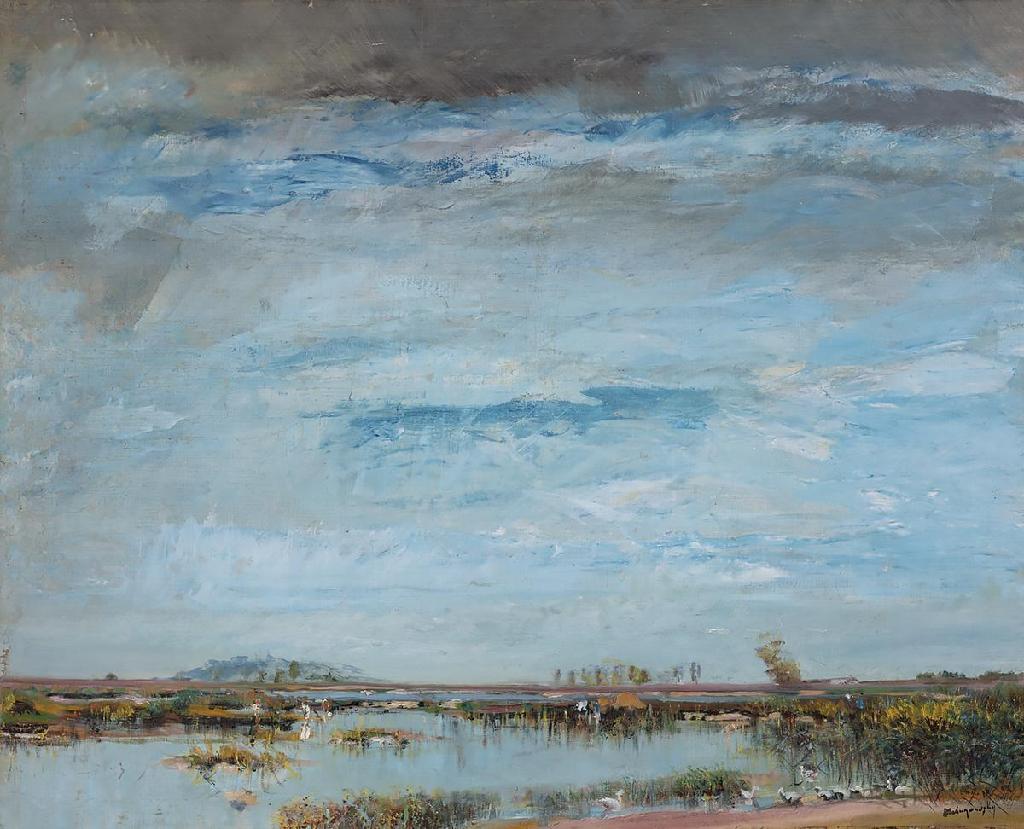Entering a restaurant with the expectation of an outstanding culinary experience is a matter of course. However, in addition to culinary art, Hotel Lomnica will delight you with the display of original works by Ladislav Medňanský, a Hungarian painter of European significance. For some time, Medňanský even worked in his painting studio in Paris‘ famous district of Montmartre.
We could say about Medňanský that he was one of the most remarkable Hungarian artists of his time and you can admire a unique collection of his original paintings displayed in our restaurant. Represented here are brilliant landscapes from different periods of his genesis as an artist as well as some of his portraits.
Baron Ladislav Medňanský or László Mednyánszky (in Hungarian), full name Ladislaus Josephus Balthasar Eustachius Mednyánszky, was born in the role of 1852 in Beckov near Trenčín, but grew up in the family mansion in Strážky, not far from here. Here he received his basic education in arts from the Viennese artist Thomas Ender. After secondary school graduation, he went to Munich to study painting and continued at the École des Beaux-Arts in Paris. He was strongly influenced by French intimate landscape painting of the Barbizon school as well as Munich luminism, which he transformed into his own artistic expression. He was cosmopolitan, alternately living in Budapest, Paris, or Vienna. He also made a study trip to Italy and spoke several languages. However, he kept returning to the family mansion in Strážky under the Tatras where he also had the only permanent studio.
During his first Munich and then French study stay (1870s), Medňanský strongly adhered to the legacy of the Barbizon school of outdoor (plein air) painting in immediate contact with the landscape. However, he was equally strongly influenced by the luminist teaching emphasising the extraordinary pictorial sensitivity to light and its display at various times of the day or season of the year. The visitor will certainly be intrigued by his „Dark Night by the Water“, a painting that does not stand out for its size but one that takes, so to speak, an ultimate form and shape in terms of both above contexts. Light, as a key phenomenon of painting before the birth of Impressionism, almost disappears and the selected colouring almost evokes the Baroque-style chiaroscuro, rather known from contemporary portraits, but very rare in landscape painting. We can only imagine what thoughts and moods, what intimate inner dramas led Ladislav Medňanský to this grim expression.

Nevertheless, a truly brilliant plein air painting work is his „Blue Landscape„, an endless swampy plain with a very low horizon and a huge mass of the sky above the flat landscape. Such a composition is very demanding to process visually, especially the large surface of the sky, where Medňanský demonstrates considerable mastery in his sensitive rendering of detail. The unusually luminous colouring with impressive style makes this work all the more interesting.
Ladislav Medňanský was known and recognized as a painter of gloomy moods, melancholy, fatal passion, and human isolation. The rich collection of outdoor landscape painting dominating his work, is complemented by figural works. Throughout his artistic genesis, he created portrait studies of gypsies, farmhands, vagabonds, social outcasts, men literally stuck on the cross of passion and destiny. Medňanský also had a great drawing skill with exceptional talent for observation – especially in terms of form, the expression of human eyes, psychology, or a character trait. According to the typology of his models (or model), it is evident that he preferred figures and faces displaying some kind of wildness, passion, marked by the shadow of fatefulness, reflecting the anxiety and fear of the entire fin-de-siècle artistic generation. He even kept notes in his journals about the interesting characters of the people he met.
Come and see their brooding faces for yourself.
